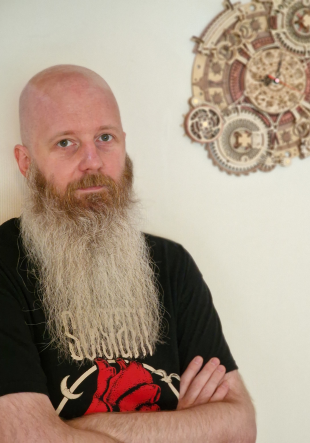Paderborn scientists heading up international research project
The volume of data that humans produce and store is constantly increasing. Forecasts suggest that by 2025, the total volume of data worldwide will reach 250 zettabytes, or 250 billion terabytes. The short lifespan of storage technologies such as hard disk drives means that they are not only very expensive, but also produce considerable amounts of electrical waste. Researchers at Paderborn University are now seeking to use DNA nanotechnology to develop an innovative, future-proof storage medium. The European Union and the British funding body UK Research and Innovation are providing the international research collaboration with a total of 3.8 million euros of funding via the ‘Horizon Europe’ programme.
Various studies have already proven that DNA-based data storage is possible outside of living organisms. It is particularly promising given that DNA can be kept for several hundred years and has a large storage capacity. However, the current method is still too slow and expensive to be put to widespread use. ‘We believe that this requires a different approach. Given this, rather than DNA synthesis, we are instead using DNA nanostructures with molecular bumps to store data – like on a compact disc’, explains Dr. Adrian Keller, head of the ‘Nanobiomaterials’ working group at Paderborn University.
Modular principle using DNA nanostructures
DNA nanostructures are complex, microscopic networks of DNA strands that are precisely woven into any chosen structures. Keller has already been researching this technology as part of his project ‘DNA-based nanoantibiotics to combat resistant germs’, for which he received Paderborn University’s Research Award in 2022. ‘We want to use DNA nanostructures like a pinboard and attach streptavidin – a protein made by bacteria of a particular species – in particular locations. If streptavidin is present, we can see it in microscopy images and allocate a one to the bit, and if not we allocate a zero. We then use artificial intelligence processes to turn the whole thing into binary data’, Keller adds. DNA nanostructures can therefore be used to store several hundred bits.
The major benefit of this technology is that it enables as many different nanostructures as desired to be constructed from a small, pre-defined set of DNA strands. This makes the processes cost-effective and applicable on a large scale. It also enables the processing of information that has already been stored.
The international, interdisciplinary consortium behind the ‘Next Generation Molecular Data Storage’ project (NEO) includes KU Leuven (Belgium), Graz University of Technology (Austria), Imperial College London and the University of Surrey (United Kingdom). Paderborn University is heading up the project.




